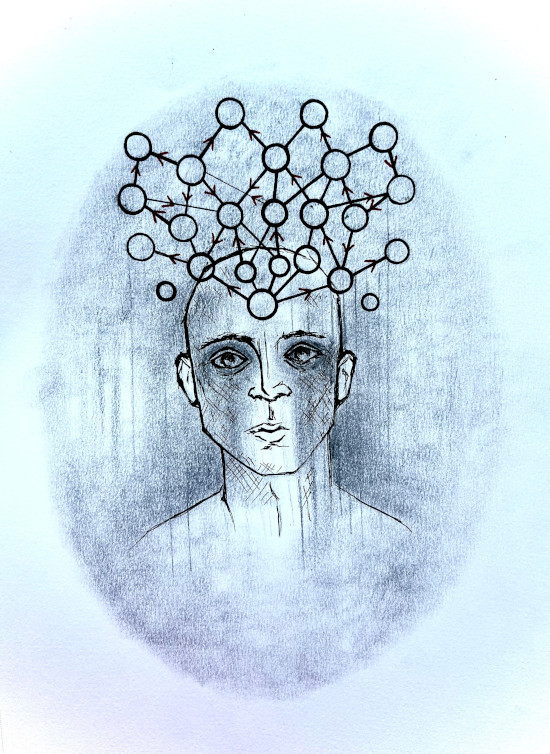AI: Tool or threat to creativity?
Does an algorithm pose a danger to expression? Probably.

Illustration by Gabrielle Funk
A recent lawsuit filed by 17 authors, including renowned fantasy novelist George R. R. Martin (the author behind Game of Thrones), against OpenAI has sparked a heated debate on the ethics of AI (artificial intelligence) and its relationship with copyright infringement in the digital age.
These writers claim that OpenAI, the tech company behind the language-processing tool ChatGPT has stolen their work without permission, raising the question of whether AI-generated works are just inspired by these authors or blatant theft.
AI systems are educated on massive databases of text and code, which include the works of innumerable humans. As a result, it is unavoidable that AI-generated material will resemble prior works.
The authors involved in the lawsuit claim that AI violates copyrights in ways that go beyond simple inspiration.
They say the writing generated by AI is similar enough to their own that it could be mistaken for their original work. They further claim that OpenAI makes money from this purportedly stolen work without paying the original authors.
OpenAI, on the other hand, justifies its stance by claiming that AI draws inspiration from preexisting created material and that the lawsuit “misconceive(s) the scope of copyright” and fails “to take into account the limitations and exceptions (including fair use) that properly leave room for innovations like the large language models now at the forefront of artificial intelligence.”
This case is a crucial battleground for deciding the moral limits of AI’s creative contributions.
Creatives worry about their future. Protecting original creators’ rights is critical in artistic endeavours like music, literature and visual arts.
Protecting creators’ exclusive rights to their work encourages them to invest time and resources into producing original content, whether it’s art, literature, music or software.
This protection ensures that creators can benefit financially from their creations and have control over how they are used and distributed. In turn, this can foster a vibrant creative ecosystem, driving further innovation and cultural enrichment while respecting the rights of those who contribute to it.
However, copyright concerns may take a back seat when AI merely automates human-performed duties, such as technical documentation or customer-service scripts.
AI is a versatile tool, rather than a replacement for genuine creativity and should only be treated as such. In some cases, it helps spark new ideas, explore different styles, aid translation and even serves as a secondary source of inspiration when authors have writer’s block.
This technology is seamlessly integrated into people’s daily lives. AI-powered systems can assist in composing emails, identify fraudulent transactions and enhance the precision of self-driving cars, among numerous other applications.
The challenge lies in distinguishing between creative and non-creative AI content and promoting ethical use. To ensure a harmonious coexistence between human creativity and AI’s transformative potential, programmers must implement systems to safeguard artists’ and creatives’ rights.
It’s a puzzle, but the only way forward is to work with the individuals who create the technology instead of aggressively antagonizing them.
Dara Babatope is an English major at the University of Winnipeg. In his free time, he writes or watches films.
Published in Volume 78, Number 05 of The Uniter (October 5, 2023)






